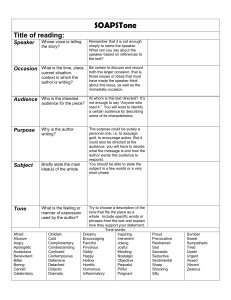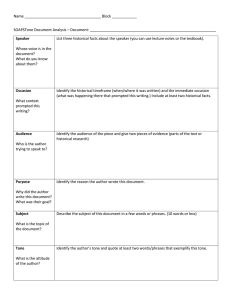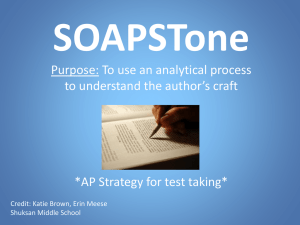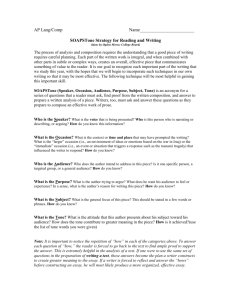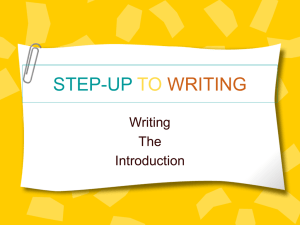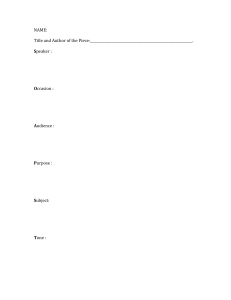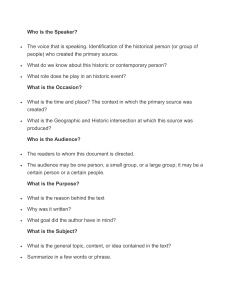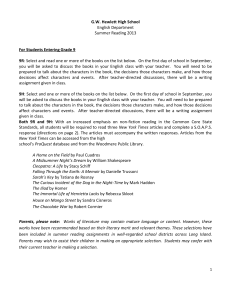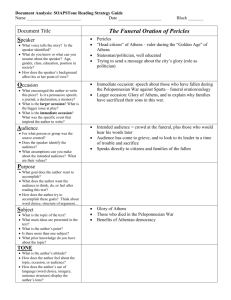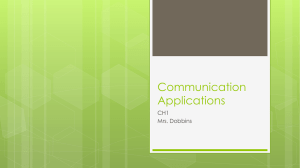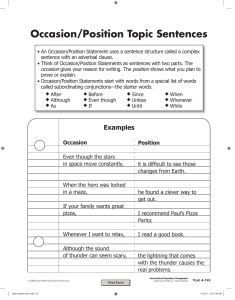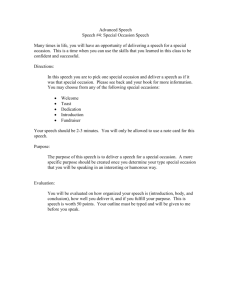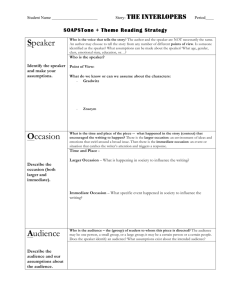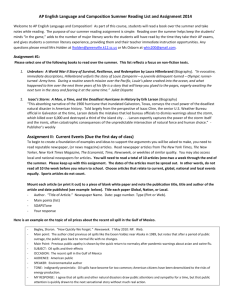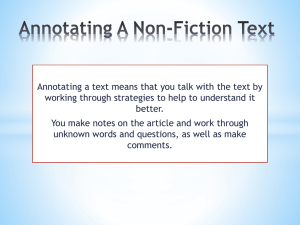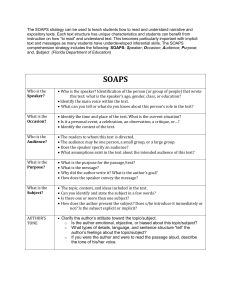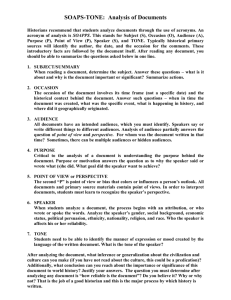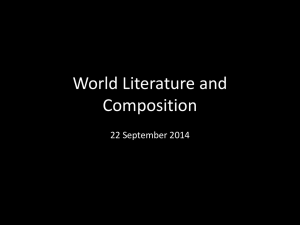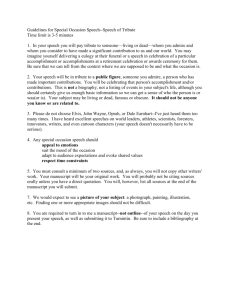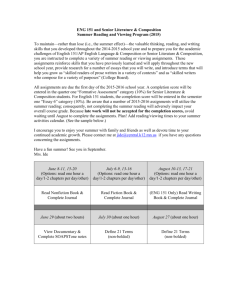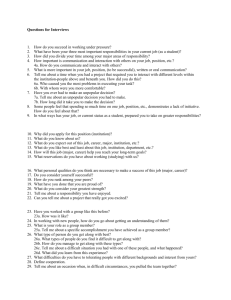How to Analyze a Political Cartoon
advertisement
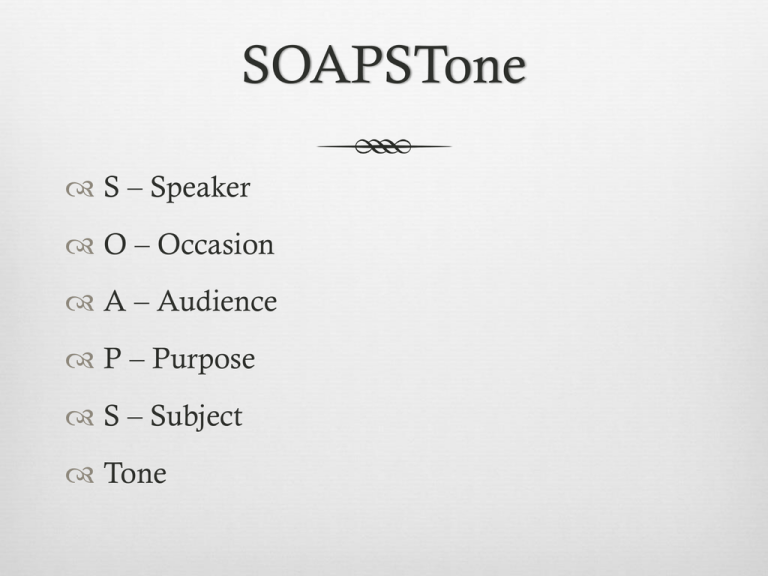
SOAPSTone S – Speaker O – Occasion A – Audience P – Purpose S – Subject Tone S - Speaker Questions to ask yourself: Who is the speaker/writer? What details does he reveal? Why is it important to know who the speaker is? His profession, views, etc. Occasion How does your knowledge of the larger occasion and the smaller occasion affect how we view and analyze the text/cartoon? (This requires you to recall your background knowledge) Is there a smaller occasion? Perhaps a smaller event that relates to this cartoon? Do you think that is what inspired the artist to draw it? Is there a larger occasion? Perhaps a general feeling in the US that would lead the general public/people to agree or disagree with the artist? Audience Who is the audience? What are their characteristics? Think about where the piece may have been published. How is the audience related to you as the reader/viewer? Why is the author addressing (writing for) this audience? Purpose What does the author hope to accomplish by his expression of his opinion? Is he trying to persuade the general public in one way or another? How should the audience respond? How does the author WANT the audience to respond? Subject What message is the author trying to portray? In other words, what is he trying to say? What are his main ideas/arguments/points? Tone What attitude does the author want us to have about imperialism? Think about if you were living during this time, or think about your ancestors – would this article influence them to believe the author? Why/Why not? How does the author’s attitude enhance the effectiveness of his writing? Think about what you are passionate about – are you more likely or less likely to be able to communicate your ideas and beliefs better or worse? Acknowledgements Duckart, Tracy. “Elements of Fiction: Point of View.” The Cache. Humboldt State University, 18 Aug. 2007. Web. 7 Oct. 2012. Morse, Ogden. “SOAPSTone: a Strategy for Reading and Writing.” AP Central. College Board, 2012. Web. 7 Oct. 2012.

